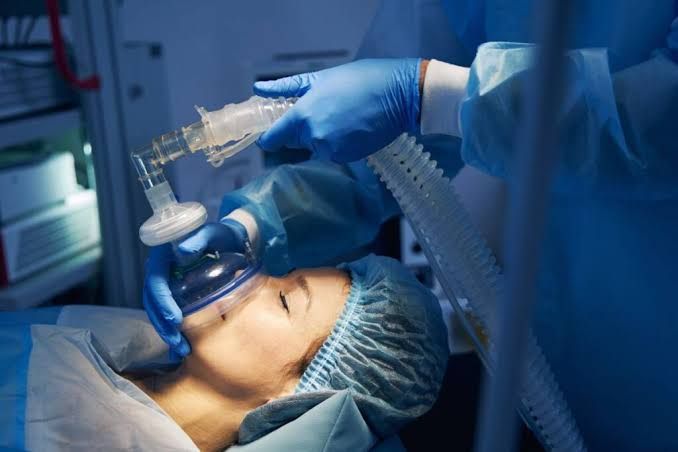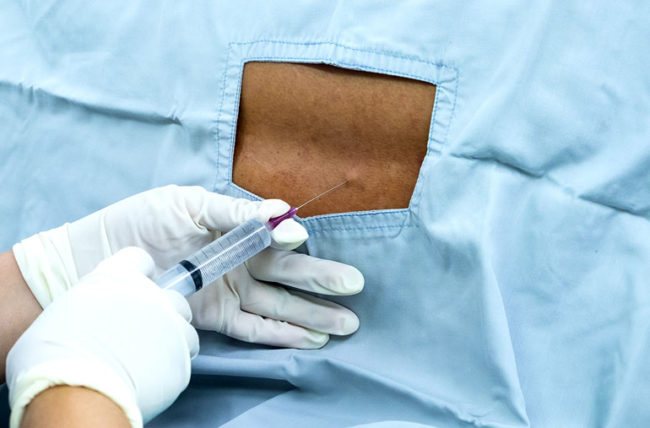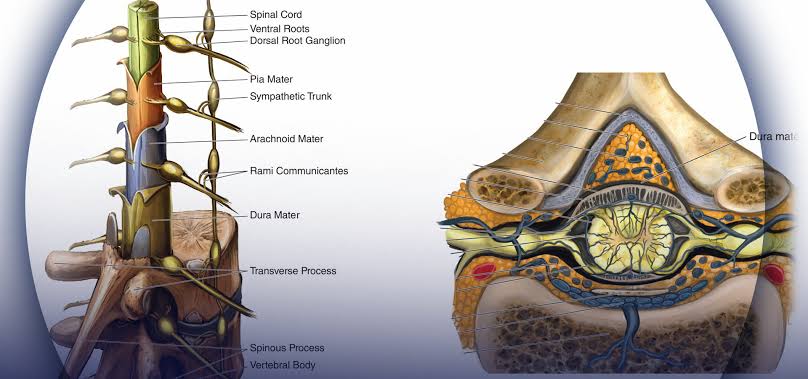
Basic Structures of the Oropharyngeal and Laryngo-Tracheal Anatomy
Oropharyngeal Anatomy
The oropharynx is a part of the pharynx located behind the oral cavity. It plays a crucial role in both the respiratory and digestive systems. The key structures within the oropharynx include:
- Palatine Tonsils: These are two oval-shaped masses of lymphoid tissue located on either side of the oropharynx. They play an important role in immune function by helping to fight infections.
- Lingual Tonsil: Located at the base of the tongue, this mass of lymphoid tissue also contributes to immune defense.
- Soft Palate: This muscular structure forms the back portion of the roof of the mouth and separates the oropharynx from the nasopharynx. It plays a role in swallowing and speech.
- Uvula: This small, fleshy extension hangs from the soft palate and helps prevent food from entering the nasal cavity during swallowing.
- Pharyngeal Wall: The walls of the oropharynx are composed of muscle and lined with mucous membranes, facilitating movement during swallowing.
- Fauces: This is the opening between the oral cavity and oropharynx, bordered by the palatine tonsils on either side.
The oropharynx serves as a passageway for both air (to reach the larynx) and food (to reach the esophagus), making it essential for both respiration and digestion.
Laryngo-Tracheal Anatomy
The laryngotracheal region includes both the larynx (voice box) and trachea (windpipe), which are vital components of the respiratory system:
- Larynx:
- Cartilages: The larynx is composed of several cartilages, including:
- Thyroid Cartilage: The largest cartilage that forms a prominent structure known as Adam’s apple.
- Cricoid Cartilage: A ring-shaped cartilage that provides support to the larynx.
- Arytenoid Cartilages: Paired cartilages that anchor vocal cords.
- Vocal Cords (Vocal Folds): These are folds of mucous membrane that vibrate to produce sound when air passes through them.
- Epiglottis: A flap-like structure that covers the glottis during swallowing to prevent food from entering the trachea.
- Cartilages: The larynx is composed of several cartilages, including:
- Trachea:
- The trachea is a tubular structure that extends from below the larynx down into the thoracic cavity where it bifurcates into two primary bronchi leading to each lung.
- It is supported by C-shaped rings of hyaline cartilage that keep it open while allowing flexibility.
- The inner lining consists of ciliated pseudostratified columnar epithelium with goblet cells that produce mucus to trap debris and pathogens.
Together, these structures facilitate airflow into and out of the lungs while also playing roles in phonation (sound production) and protecting against aspiration during swallowing.
Indications and Complications of Airway Management by Face Mask, Laryngeal Mask, and Intubation
1. Face Mask Airway Management
Indications:
- Used for patients who are conscious or semi-conscious and can maintain their own airway.
- Suitable for procedures requiring sedation where the patient does not require deep anesthesia.
- Commonly used in preoperative settings to provide supplemental oxygen or during induction of anesthesia.
Complications:
- Inadequate ventilation due to poor seal or improper positioning.
- Risk of aspiration if the patient has not fasted adequately.
- Potential for airway obstruction from tongue displacement or soft tissue collapse.
- Increased risk of gastric distention leading to regurgitation.
2. Laryngeal Mask Airway (LMA) Management
Indications:
- Ideal for elective surgeries where tracheal intubation is not necessary but controlled ventilation is required.
- Useful in emergency situations as a rescue device after failed intubation attempts.
- Can be utilized in patients with difficult airways where traditional intubation may pose challenges.
Complications:
- Misplacement leading to inadequate ventilation or esophageal intubation.
- Risk of aspiration, particularly if the cuff pressure is not monitored correctly.
- Potential injury to laryngopharyngeal structures due to excessive cuff pressure.
- Limited ability to protect the airway compared to endotracheal tubes, especially in cases of significant regurgitation.
3. Endotracheal Intubation Management
Indications:
- Required for patients needing mechanical ventilation or those unable to maintain their airway independently (e.g., unconscious patients).
- Indicated in cases of severe respiratory distress, failure of other airway management techniques, or during major surgical procedures requiring general anesthesia.
Complications:
- Trauma to the teeth, lips, or vocal cords during insertion.
- Risk of accidental esophageal intubation leading to inadequate ventilation and potential aspiration.
- Possible development of tracheal stenosis or injury from prolonged intubation.
- Ventilator-associated pneumonia due to prolonged mechanical ventilation through an endotracheal tube.
Appropriate Sizes of Medical Airway Devices
When considering the appropriate sizes for various airway management devices, it is essential to refer to established guidelines and recommendations from authoritative medical sources. The sizing of these devices can vary based on patient age, weight, and specific clinical situations. Below is a detailed breakdown of the appropriate sizes for face masks, laryngeal masks, oral and nasal airways, laryngoscope blades, and endotracheal tubes.
1. Face masks
Face masks are used in various medical settings, particularly for delivering oxygen or anesthetic gases to patients. The appropriate size of a face mask is typically determined by the patient’s age and facial structure:
- Neonatal: Size 0 (smallest)
- Pediatric: Size 1-2
- Adult: Size 3-5 (with size 4 being the most commonly used for average adults)
2. Laryngeal masks
Laryngeal masks are designed to create a seal around the larynx to maintain an open airway. The sizes are categorized based on the patient’s weight:
- Size 1: Neonates (up to 5 kg)
- Size 2: Infants (5-10 kg)
- Size 3: Children (10-20 kg)
- Size 4: Adults (50-70 kg)
- Size 5: Large adults (>70 kg)
3. Oral and nasal airways
Oral and nasal airways are used to maintain patency of the airway in unconscious patients. The sizing is generally based on the length from the patient’s lips to the angle of the jaw for oral airways, and from the nostrils to the ear lobe for nasal airways:
- Oral Airway Sizes:
- Size 00: Neonate
- Size 0: Infant
- Size 1: Child
- Size 2: Adult female
- Size 3: Adult male
- Nasal Airway Sizes:
- Size 6 Fr (French): Neonate
- Size 8 Fr: Infant
- Size 10 Fr: Child
- Size 12 Fr: Adult
4. Laryngoscope blades
Laryngoscope blades come in various sizes, primarily classified as Miller or MacIntosh blades:
- Miller Blade Sizes:
- Size 0: Neonate
- Size 1: Infant
- Size 2: Child
- Size 3 & above for adults
- MacIntosh Blade Sizes:
- Size 1: Infant
- Size 2 & above for children and adults
5. Endotracheal Tubes (ETT)
Endotracheal tubes are sized according to internal diameter measured in millimeters:
- Neonates: ETT size ranges from #2.5 to #3.5 mm ID.
- Infants: ETT size ranges from #3.0 to #4.0 mm ID.
- Children: ETT size ranges from #4.0 to #6.0 mm ID.
- Adults:
- Female patients typically use an ETT size of #7.0 to #8.0 mm ID.
- Male patients typically use an ETT size of #7.5 to #8.5 mm ID.
Recognizing Upper Airway Obstruction and Appropriate Interventions
1. Understanding Upper Airway Obstruction
Upper airway obstruction occurs when there is a blockage in the upper airway, which can impede airflow to the lungs. This condition can be caused by various factors including:
- Anatomical Causes: Such as enlarged tonsils, adenoids, or tumors.
- Injury: Trauma to the face or neck that may lead to swelling or structural damage.
- Foreign Bodies: Objects lodged in the throat or airway.
- Neuromuscular Disorders: Conditions that affect muscle control, leading to relaxation of the airway muscles.
Signs of upper airway obstruction include:
- Stridor (a high-pitched wheezing sound)
- Difficulty breathing
- Cyanosis (bluish discoloration of the skin)
- Use of accessory muscles for breathing
- Altered mental status
2. Assessment of Airway Patency
To assess whether an upper airway obstruction is present, one should perform a quick evaluation:
- Observe for signs of respiratory distress.
- Listen for abnormal breath sounds such as stridor.
- Check for visible obstructions in the mouth or throat.
If an obstruction is suspected, immediate action is required.
3. Interventions for Upper Airway Obstruction
Several techniques can be employed to relieve upper airway obstruction:
A. Head Positioning
Proper head positioning can help open the airway:
- Neutral Position: Align the head with the spine; this may be sufficient for some patients.
- Extension: For adults, gently tilt the head back while lifting the chin (this may not be suitable for patients with potential cervical spine injuries).
For infants and children, a slight extension may also be beneficial but should be done cautiously.
B. Chin Lift Maneuver
The chin lift maneuver is performed as follows:
- Place one hand on the forehead and apply gentle pressure backward.
- Use two fingers from your other hand to lift the chin upward.
- This maneuver helps to displace the tongue away from the back of the throat, opening up the airway.
C. Jaw Thrust Maneuver
The jaw thrust maneuver is particularly useful in cases where spinal injury is suspected:
- Place both hands on either side of the patient’s jaw.
- Push forward on both sides of the jaw without tilting the head back.
- This technique helps maintain alignment of the cervical spine while opening up the airway.
D. Use of Airways
If basic maneuvers do not relieve obstruction, adjuncts such as oral and nasal airways may be used:
- Oral Airway:
- Select an appropriate size (from corner of mouth to angle of jaw).
- Insert it upside down into the mouth until it reaches soft palate; then rotate it 180 degrees into position.
- Ensure it does not cause gagging or further obstruction.
- Nasal Airway:
- Choose a size that extends from nostril to earlobe.
- Lubricate and gently insert into one nostril following natural curvature; avoid forceful insertion.
E. Face Mask Ventilation
In cases where positive pressure ventilation is needed:
- Place a properly sized face mask over patient’s nose and mouth ensuring a good seal.
- Use both hands to hold mask in place while delivering breaths via bag-valve-mask (BVM) device if available.
- Watch for chest rise indicating effective ventilation.
4. Conclusion
Recognizing upper airway obstruction involves careful assessment and prompt intervention using techniques such as head positioning, chin lift, jaw thrust maneuvers, and adjunctive devices like oral/nasal airways and face masks when necessary.
Demonstrating Bag-Mask Ventilation of an Unconscious Patient
Step 1: Preparation and Equipment Check
Before beginning bag-mask ventilation (BVM), ensure that all necessary equipment is available and functioning. This includes:
- A self-inflating bag (resuscitator bag)
- A non-rebreathing valve
- Appropriately sized face masks
- An oxygen source capable of delivering 100% oxygen at a flow rate of at least 15 L/min
- Airway adjuncts such as oropharyngeal or nasopharyngeal airways, if indicated
Step 2: Positioning the Patient
Position the patient on their back on a flat surface. Ensure that the head is in a neutral position to maintain airway patency. If possible, use the “sniffing” position by slightly extending the neck.
Step 3: Establishing Airway Patency
Clear any obstructions from the airway. This may involve:
- Using suction to remove secretions or vomitus
- Performing a jaw-thrust maneuver if there is concern about cervical spine injury, or using a head tilt-chin lift maneuver for patients without such concerns
Step 4: Inserting Airway Adjuncts (if necessary)
If indicated, insert an oropharyngeal airway for patients without a gag reflex, or a nasopharyngeal airway for those with an intact gag reflex. Ensure that these adjuncts are properly sized for the patient.
Step 5: Applying the Mask
Select an appropriately sized mask that fits snugly over the patient’s mouth and nose. Place it over the patient’s face while ensuring that it covers both areas adequately.
Step 6: Creating a Seal
Using both hands, apply pressure to create a tight seal around the mask using either:
- The two-handed thumbs-down technique (preferred method) where your thumbs are placed on the top of the mask and fingers are positioned along the jawline to stabilize it.
- Alternatively, if only one rescuer is available, use the one-handed C-E grip by forming a “C” with your thumb and index finger around the mask while using your other fingers to pull the jaw forward.
Step 7: Ventilating the Patient
With an assistant if possible, begin ventilating:
- Squeeze the bag slowly and steadily to deliver breaths. Aim for approximately 6-7 cc/kg of tidal volume over 1-2 seconds.
- Allow adequate time between breaths (approximately every 5–6 seconds) to allow for exhalation.
Monitor chest rise to confirm effective ventilation; if no chest rise occurs, reassess mask positioning and seal.
Step 8: Monitoring and Adjustments
Continuously monitor vital signs and oxygen saturation levels using pulse oximetry. If gastric distension occurs or ventilation seems ineffective:
- Reassess airway positioning
- Consider inserting a nasogastric tube if needed to relieve pressure from gastric distension
If complications arise such as aspiration or inadequate ventilation despite repositioning, be prepared to switch to advanced airway management techniques like endotracheal intubation.
Conclusion
Bag-mask ventilation is critical in emergency situations involving unconscious patients. Proper technique ensures effective ventilation and oxygenation until further medical intervention can be provided.







